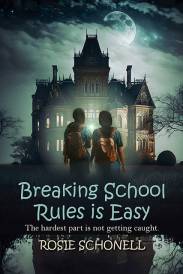Sofia Coppola The Beguiled Interview
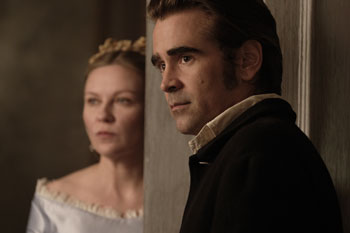
Sofia Coppola The Beguiled Interview
Cast: Nicole Kidman, Kirsten Dunst, Elle Fanning, Colin Farrell
Director: Sofia Coppola
Genre: Drama, Western
Synopsis: The Beguiled is an atmospheric thriller from acclaimed writer/director Sofia Coppola.
The story unfolds during the Civil War, at a Southern girls' boarding school. Its sheltered young women take in an injured enemy soldier. As they provide refuge and tend to his wounds, the house is taken over with sexual tension and dangerous rivalries, and taboos are broken in an unexpected turn of events.
The Beguiled
Release Date: 13th of July, 2017
Interview with Sofia Coppola, Screenwriter and Director
'There's always a mystery between men and women;"
Question: You have said that you try to make personal films. What is personal about The Beguiled for you?
Sofia Coppola: With any movie, I never know until later on. Things I've seen, people I know become part of it.
But I've always been intrigued by how women interact, and I've seen how they can sometimes change when there's a man around.
Question: Then is The Beguiled your return to a theme of female collectives, or communities, that have evolved or are evolving? In The Virgin Suicides, there are sisters in a community; in Marie Antoinette, there is a court that is its own world; and in The Bling Ring, there is a clique that ends up breaking laws.
Sofia Coppola: Yes, I've always been interested in observing the dynamics of a group – especially females. I feel that the dynamics between women can be very under-the-surface and subtle whereas men are more overt.
So I was drawn to this story because it was about a group of women – and it did remind me a little bit of The Virgin Suicides, with girls cut off from the world – and because I'd never really done a movie about women at varying ages at different points in their lives and how they all relate to each other. In the story, they each relate differently to the man.
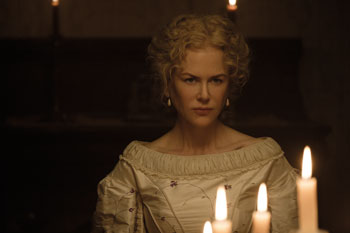 Question: It's four different age groups: Miss Martha, Edwina, Alicia, and the younger girls.
Question: It's four different age groups: Miss Martha, Edwina, Alicia, and the younger girls. Sofia Coppola: They each have their own relationship to McBurney.
Question: When and how did you come across the source material of Thomas Cullinan's novel The Beguiled?
Sofia Coppola: My friend and production designer, Anne Ross, had first told me about the movie The Beguiled, which I had never seen but which I knew was highly regarded. I watched it, and the story just kept staying in my mind – how it was weird and the turns were unexpected. I would never think to remake a movie, but I was curious so I got the book it was based on.
I thought, what about retelling the story from the women's point of view? So The Beguiled would be a reinterpretation; the premise is loaded because power dynamics between men and women are universal. There's always a mystery between men and women: 'Oh, why did he say that?" [laughs]
Question: Did you consider changing the book's setting?
Sofia Coppola: People said to me, 'Oh, you could set it somewhere else." But I was fascinated by the Civil War-era South, and at how women were raised at that time to be in relation to men to be delicate and attractive and to be good hostesses – their whole roles revolved around men, but then the men were gone…what was it like for them, left on their own to survive and to sustain?
Question: So this isn't a remake but rather an adaptation, which you have done before. Was the book told from the male point of view?
Sofia Coppola: No, it's written by a man but it's told from the women's point of view; each chapter is a different woman telling her story.
Question: What from the novel did you opt to play up, or, conversely, retire from this telling?
Sofia Coppola: There were some elements that I felt were over-the-top; even though the story is pretty heightened, I wanted it to feel as realistic and relatable as possible.
In the book, the soldier is Irish. When I met with Colin Farrell and heard his natural Irish accent, I thought it would be great to keep that and make McBurney even more exotic for the women. And we make reference to how he is a mercenary who was paid to take another man's place [as a Union soldier]. But I wanted him to charm, that it not be obvious that he's bad news. From the women's point of view, it's, 'I want to believe him." With Colin, that comes across.
Question: Right, watching them with him on-screen you do get this sense of…if not quite hope, then that maybe things won't go bad and blow up.
Sofia Coppola: The women have to feel hope, especially Kirsten Dunst's character of Edwina. For McBurney, he gets there and he's in Heaven. They're all tending to him, and dressing up for him.
So, guys that are charming but who you probably shouldn't trust even though you want to? I feel like everyone can relate to that. Everyone's been there.
Question: In the 1971 movie, there was an African-American character, Hallie, portrayed by Mae Mercer. Did you consider her storyline for this telling?
Sofia Coppola: I didn't want to have a slave character in The Beguiled because that subject is a very important one, and I didn't want to brush over it lightly. This movie is about this one group of women left behind during the War.
Question: And there's fewer girls at the school in your movie than in The Beguiled…
Sofia Coppola: The idea is that a lot of them left –
Question: You have Miss Martha mention that she's sent many students home already.
Sofia Coppola: Yeah, so it feels even more abandoned.
Question: You mentioned that the story is heightened. Did you enjoy getting into the thriller elements of the plot?
Sofia Coppola: I was reminded of Misery, in that the man is the guest-slash-prisoner, a [1990] movie I had seen when it came out. So that was in the back of my mind. But it was challenging, because I've never done anything like this story – it's outside of my comfort zone, but I'm still doing it my way. I had to push things more, because I'm usually restrained. It was fun to have a plot and a beautiful poetic setting together, which was new for me! [laughs]
Question: You have made other films set in times past. Since you wanted to keep the Civil War setting that the book had, what surprised you about that era which you learned about during research?
Sofia Coppola: I was surprised at how they lived when things were so scarce. We had a Civil War re-enactor teaching us how to do the medical applications of that time – Nicole Kidman learned about bandaging – and the handiwork, the embroidery; they had run out of paper and they were writing on the edges of books…
We read these manners books from the time; one example from them was that a woman is not supposed to take a compliment because that would encourage vanity. The role of the ladylike woman had to be played and accentuated. But these women grow tired of being messed with…
Question: There was so much formality, including their addressing each other as 'Miss" and then the first name. It makes the dialogue more lyrical…
Sofia Coppola: Yes, and I love that even towards the end of the movie, when they're up to…things [laughs], they always have this veneer of ladylike gentility and small talk.
There is still a lot of etiquette from that time in the South today – and with such a flourish, too!
Question: What were some of your visual inspirations?
Sofia Coppola: It's always a mix of things, from all over. We looked at Civil War portraits, but also William Eggleston's photos from the 1970s of girls together. The film Tess. Hitchcock's movies, for suspense.
Question: As the project was coming together, how did you decide on Philippe Le Sourd as your cinematographer? This is his first feature with you.
Sofia Coppola: I had worked with him before, on a few commercials. He is such an artist; I felt he could bring something beautiful to The Beguiled.
I was so happy to be able to shoot on film, with vintage lenses, because it's getting more and more rare. The look of this movie had to be soft and gauzy, but also sun-drenched in a hot locale and with a lot of smoke. The characters are being stifled, including with sexual repression.
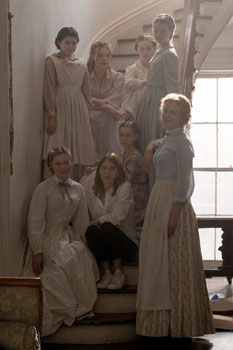 Question: That locale is quite tangible.
Question: That locale is quite tangible. Sofia Coppola: Yes, a real location with oak trees and Spanish moss. Madewood [Plantation House] is a beautiful setting but it also has darkness underneath because of the history of its being a plantation.
I wanted to feel the insects, the lushness…The group can no longer keep the area groomed because there's not enough of them and the groundspeople have left. So there are vines growing upwards, adding to the feeling of danger even though they're keeping up lacy curtains and nice stuff inside. There's this contrast: the house is very refined, and then nature outside is overgrown and wild.
And there's the contrast between McBurney and the women: they're in pastel dresses and then this dirty, ragged man arrives. They have lots of layers of clothes; they're overheated, but they can't wear sundresses. They're always buttoned up in a hot temperature.
[Costume designer] Stacey Battat and I did decide that the women would not be wearing the big hoop skirts any more; they're just wearing the dresses without those. So the dresses look like ones that could be worn today; I wanted the costumes to feel true to the period but also relatable, authentic but also attractive to a modern eye.
Everything is so faded that palettes blend together, and they look even more like a unit of women. Stacey had never done a period movie before, so this was new to her.
Question: Like Anne Ross, she's done multiple movies with you –
Sofia Coppola: Anne and I put together mood boards that Stacey and Philippe could look at so everyone was on the same page. Working with a team that I've known a long time, they get what I'm thinking about and there is a shorthand.
Question: That's one reason you were able to shoot this movie in 26 days.
Sofia Coppola: And we had a good local team in Louisiana.
Question: Was your longtime editor, Sarah Flack, cutting early on?
Sofia Coppola: Yeah, Sarah was getting footage as we went, cutting as we were filming. It would have been nice to have had more time. But with low-budget filmmaking it's, work as fast as you can.
Question: You had mentioned the insects on the property, and they're part of the sound design of The Beguiled. There is very little music; it's as if the score is the drumbeat of explosions sounding miles in the distance yet really not that far away.
Sofia Coppola: These lives are so stripped-down that it wouldn't have made sense to have a big music score. I wanted to keep that minimal.
I thought it would be more tense for the audience, feeling how they were all stuck with the sound of the cicadas almost non-stop and those cannons in the distance. The War's been going on a long time and it's in the background; the women have come to be used to that.
Question: Like the characters, you notice the cannons until you don't and then maybe you do again. Because it's every day –
Sofia Coppola: It's become their normalcy, part of the setting.
Question: What made Nicole Kidman uniquely qualified to play Miss Martha as you had reconceived the character?
Sofia Coppola: I've loved Nicole's performances – especially when she plays a little bit twisted, like in To Die For. I've always wanted to work with her, and when I was writing the screenplay I pictured her and that helped me. I knew she would bring a lot to Miss Martha, including humor and emotion. Nicole can play it so commanding that you know she's in charge of the whole group.
Question: Very much so. In some of the scenes with McBurney it's like Miss Martha is a general and he's this visiting soldier.
Sofia Coppola: Yes. But I didn't want the cliché of the scary headmistress. At all ages in this movie, the women are Southern beauties – although Miss Martha's moment as a Southern belle has passed, and the parties are over. What's become real for her is protecting these girls; she's had to be strong in difficult times.
Question: You're reteamed with Kirsten Dunst again – and all your movies have starring her have taken place in the past.
Sofia Coppola: I never thought about that before; it's true.
Question: Although, she had a bit in The Bling Ring.
Sofia Coppola: A cameo, that doesn't count. I enjoy working with Kirsten, so I had wanted to do something again with her.
Question: How is she so well-suited to portray women from different times, different places?
Sofia Coppola: Kirsten has a quality that makes her believable as being from another time. That's not to say she can't be contemporary, too. But when she is in a period costume I can believe that she is someone of the era.
For The Beguiled, I wanted her to play Edwina, the vulnerable schoolteacher, because she's so not like that; the character is repressed and fragile, and that's not Kirsten at all.
It was the same with having Elle Fanning, who is so sweet and big-hearted, playing a 'bad girl." I thought that would be fun. I like seeing actresses playing against what you would expect from them.
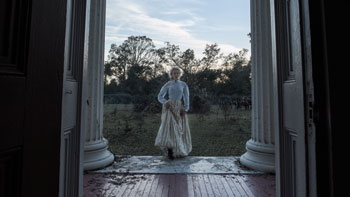 Question: How is Elle even more capable now as an actress than when you last worked with her, seven years ago, on Somewhere?
Question: How is Elle even more capable now as an actress than when you last worked with her, seven years ago, on Somewhere? Sofia Coppola: She was 11 when we did Somewhere, and it was wild that she was 18 making The Beguiled. She has the same personality, and is the same person – but a grown-up version. She still has all her childlike sparkle, and she's so natural. I was impressed with her as an actress then, and now even more so.
Elle brings so much to playing Alicia, showing the character as vain and into herself. Alicia is aware of how she's presenting herself, like when she spreads her skirt out as they all sit down with McBurney and she looks at him. In the book, the character has really been raised to catch a man.
Question: Elle is often surrounded by the film's younger teen actresses. How did you come across the four of them, and cast them as a group?
Sofia Coppola: I had a great casting team. Having girls who were the characters' ages was important. I wanted to be thorough; we met so many young actresses in that age range.
We then started putting pictures of actresses on a wall to see how they would look together, whether they might look too similar, so you wouldn't get them mixed up. They also each had to have a strong personality and stand apart from each other. We started to put our favorites together, and see how they would work with each other. These four girls stood out.
Two of them, Oona Laurence and Emma Howard, had been on Broadway in Matilda; Oona would be able to sing, as Amy, and Emma, as Emily, looks like a portrait from the era the movie takes place in.
Angourie Rice is from Australia, and she is so talented; I had her play Jane as prissy. Addison Riecke, who plays Marie, is so funny. I didn't realise until after I had met her that she is on a television show, The Thundermans, which my kids love.
They all worked well together. In the movie, I think you do feel that they're a group.
Question: You emphasize the closeness further on-screen by showing several of the girls sharing a bed together.
Sofia Coppola: Yeah, we figured that the girls away from their families would be sharing a room and then someone would come and get into bed because it was scary in this big house. They're kids, clinging together.
Question: Did you cultivate that among them, to foster a closeness?
Sofia Coppola: Yes. We had a rehearsal period, so they took dancing lessons and etiquette classes and sewing instructions – what girls of that time would be doing. Spending time together on all these activities, they formed a bond.
During filming – especially when we were out at Madewood – they would all hang out and they became friends. They went out trick-or-treating together for Halloween in the town we were in.
Especially for a small cast and crew on a low-budget movie, I think there's this camaraderie, or sleepaway camp, feel when you're all on location because you're not going back to your regular lives each night.
On The Beguiled, we were all staying at this Hampton Inn [hotel] and we'd be in the lobby in our pajamas. When we were shooting interiors at the home in New Orleans, there was a porch with a big long table and that ended up being where would hang out. Or in the backyard. Sweet atmosphere.
The Beguiled
Release Date: 13th of July, 2017
MORE


